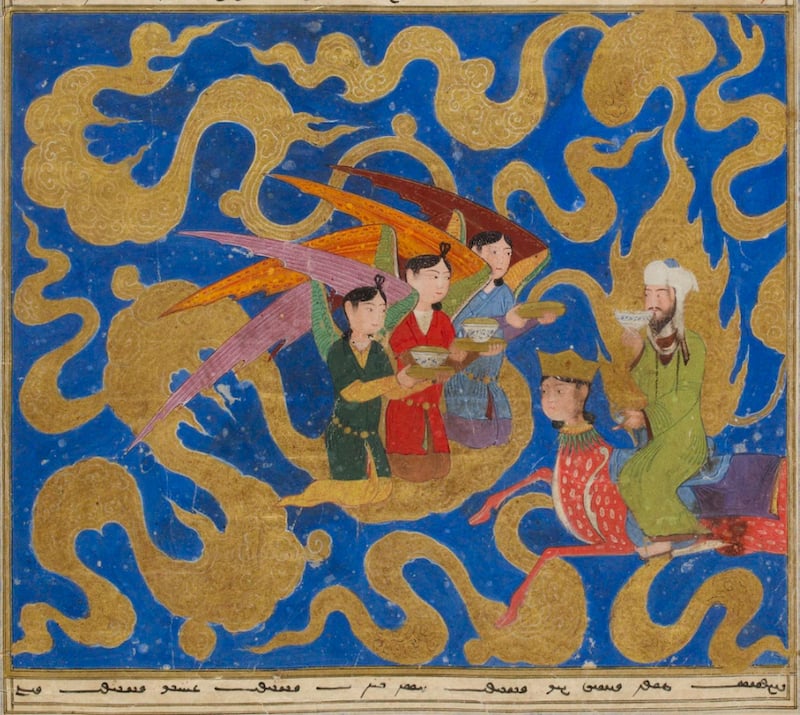Art World
The Secret Islamic Devotional Art That Depicts Muhammad
Drawing Mohammed wasn't always sacreligious.

Drawing Mohammed wasn't always sacreligious.

Sarah Cascone

In the wake of last week’s attack on French satirical magazine Charlie Hebdo, which, it is thought, enraged Islamic extremists with its repeated publication of irreverent cartoons featuring Muhammad, it’s worth revisiting the Muslim religion’s small and widely overlooked yet rich history of figurative art depicting the prophet.
Though the Islamic faith is widely understood to prohibit any representation of Muhammed, calling it idolatry, no such proscription appears in the Koran. “It comes from the notion that God is transcendent and that nothing should be put in God’s place,” John Esposito, a professor of Islamic studies at Georgetown University, told the Huffington Post. “You don’t want to have a statue or a picture of God, because people may wind up praying to it.”
While the so-called ban is in widespread effect in Arab countries, Persian and Turkish Muslims have a tradition of artwork depicting Muhammad that dates back to at least the mid-13th century. (Baghdad’s imperial library was sacked by Mongol hordes in 1258, and records before that time are difficult to come by.)
Personal devotional images depict scenes from the life of the prophet, most commonly in miniature form. Prominent examples do exist, such as a five-story mural installed by the Tehran government in 2008, and an artwork showing Muhammad’s ascension into heaven displayed in the Islamic art galleries at New York’s Metropolitan Museum of Art.
Of course, such devotional imagery is worlds away from the Charlie Hebdo cartoons, which continue to make even the most ardent supporters of free speech take pause, and which controversially led to self-censorship by several major news publications last week.
“It’s really important for audiences that have never seen the pietistic images of Muhammad to make a radical distinction between the mystical and beautiful images that have been produced over the last 1,000 years by Muslims and for Muslims, and the offensive and sometimes pornographic images” published in Charlie Hebdo, Omid Safi, director of the Islamic Studies Centre at Duke University in North Carolina, warned the Guardian.
An observant Muslim as well as a scholar, Safi personally owns one such religious image of Muhammad, but is often reluctant to divulge the truth of the painting’s subject to Muslim visitors, who might find it blasphemous. Now, however, there is a bit of a push to bring this tradition into wider public consciousness.
“We can’t blame Muslim communities for not knowing that they exist, if we don’t make them publicly available,” the University of Michigan’s Christiane Gruber, who specializes in the depiction of Muhammad in Islamic art, told the Guardian. “Publishing these images is artistic restitution in the face of senseless irreverence.”